Frank C. Strick & Co. Ltd.
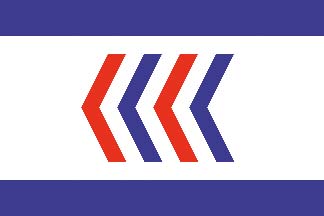
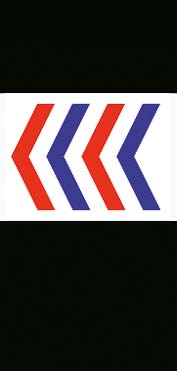 Strick Line became famous for a rapid rise to pre-eminence in the Persian Gulf liner trade, but also had a substantial tramping fleet trading to the Mediterranean. Frank Clarke Strick belonged to the Strick families of Swansea and his father, James Strick, was a Lloyd’s Agent in the 1840s as well as a charterer and shipper of coal from Swansea and later a shipowner in a small way. James Strick had married Emily Huxham from Devon in 1839 and Frank Clarke Strick was born as their third child on 7th October 1849. He joined his father’s business in Gloucester Chambers, Swansea before becoming a partner in Poingdestre & Mesnier, shipbrokers of the same address. Jules Mesnier was to become a lifelong friend of Frank with each writing weekly to the other, and it was really their friendship that was the basis of the later Strick Line.
Strick Line became famous for a rapid rise to pre-eminence in the Persian Gulf liner trade, but also had a substantial tramping fleet trading to the Mediterranean. Frank Clarke Strick belonged to the Strick families of Swansea and his father, James Strick, was a Lloyd’s Agent in the 1840s as well as a charterer and shipper of coal from Swansea and later a shipowner in a small way. James Strick had married Emily Huxham from Devon in 1839 and Frank Clarke Strick was born as their third child on 7th October 1849. He joined his father’s business in Gloucester Chambers, Swansea before becoming a partner in Poingdestre & Mesnier, shipbrokers of the same address. Jules Mesnier was to become a lifelong friend of Frank with each writing weekly to the other, and it was really their friendship that was the basis of the later Strick Line.
Frank C. Strick moved to London in 1885 and began in business on 20th October 1885 at the age of 36 years as Frank C. Strick & Co. Ltd., shipbrokers and coal exporters of Bishopsgate Street, London EC.
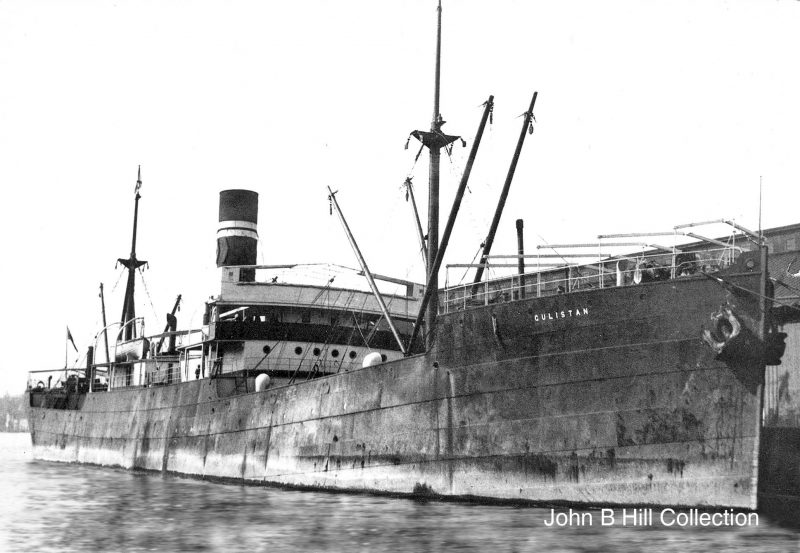
The nominal share capital was £2,000 but this was subsequently increased to £50,000 in 1895 and £100,000 in 1903. The basis of his shipowning career was the iron ore trade from North Africa, particularly from the Mokta mines there, with the Mokta Company of Paris having close associations with Jules Mesnier. Frank also made close contacts with the ore brokers Naylor, Benzon & Co. Ltd. and in 1887 he established the Anglo-Algerian Steamship Co. Ltd. (known as Strick Line Ltd. from 1913) to own his first vessel, Normand, purchased from Jules Mesnier. He also established the London & Paris Steamship Co. Ltd. at this time as a vehicle for raising further finance, with the initial finance coming from his favourite cousin, Ann Jose Strick from Swansea. The first steamer exported coal from South Wales to France and Italy and imported iron-ore from North Africa. He then contracted with William Doxford & Sons Ltd. on 28th November 1888 for a new steamer of 2,700 dwt with a partial awning deck at a cost of £23,350. She was launched on 1st July 1889 as Alphonse Parran, in honour of the then Chairman of the Mokta Company of Paris and left on her maiden voyage from Sunderland on 9th August 1889 for Algiers under the command of Capt. Kodder. As with all the other first Strick steamers she was registered at Swansea.
In 1892 Frank was inspired by Jules Mesnier to despatch Alphonse Parran with coal and general cargo to the Persian Gulf, calling at Red Sea ports en-route. It was this voyage that led to the founding of the Anglo-Arabian & Persian Steamship Co. Ltd. later in 1892 and the development of the Gulf trade. In April, 1893 Arabistan of 4,500 dwt was delivered from Alexander Stephen & Sons Ltd. at Linthouse in Glasgow. A larger sister, Turkistan, was delivered in August, 1894 by the same yard for the same trade, having been launched as Farsistan. The Anglo-Algerian Steamship Company (1896) Ltd. was formed in 1896 with Jules Mesnier as Chairman to expand the Mediteranean business, and the names of new ships were also to be of Persian origin so that they might be utilised on the Gulf service. William Gray delivered Baluchistan in 1896 for the Mediterranean trade and a further five tramps for this trade up to March 1899. A total of fifteen new steamers were owned in 1900 with offices in London, Swansea, Cardiff, Newport and Manchester.
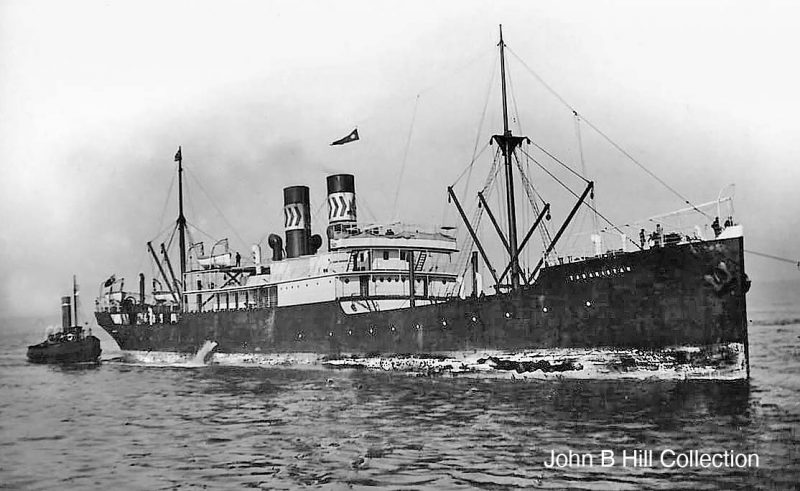
The two main Persian Gulf traders, Arabistan and Turkistan, quickly established themselves in the Gulf trades and were profitable, but as the outward sailings rarely obtained a full cargo for the Gulf alone, he introduced calls at Mormugao and the Malabar Coast of India as the diversion was minimal. The Bombay and Karachi trades were a much tougher nut to crack as the lucrative Government and railway contracts were jealously protected by the West India Conference of the established British India, P & O, Clan Line and Ellerman companies. Control of this trade was by Government official tender and Frank Strick made keen, successful tenders, which was in Government interests since competitive Strick rates lowered Conference rates. Strick ships loaded with Indian and Gulf cargo at London and Newport, but the Conference retaliated by then accepting Gulf cargo outwards and trans-shipping into British India ships at Bombay. They then loaded full cargoes of dates in the Gulf homewards during the date season.
Frank Strick was able to conclude an independent agreement in July 1903 with the Bucknall S.S. Co. Ltd. and the West Hartlepool Steam Navigation Co. Ltd. (J.E. Guthe & Co.) for the Gulf trades in the proportion of Strick (23/60ths), Bucknall (23/60ths) and Guthe (14/60ths). The duration of the agreement was for six years and the ships provided were to be in the range of 3,000 to 4,800 dwt. Henry Bucknall and his associate shipbroker Edward Lloyd were short of ships at the turn of the century and purchased 20 steamers between 1898 and 1902, including the original Strick Turkistan in 1898 and Arabistan in 1901. The Strick fleet had grown to a dozen new ships by the date of this agreement and included a new Arabistan and Turkistan. The outward ports were Manchester, Cardiff, Newport and London with much competition at Manchester with the Conference Liverpool trade, who retaliated in the Gulf trade by offering to on-carry from Bombay to the Gulf at one-third of whatever rate was levied from Manchester.
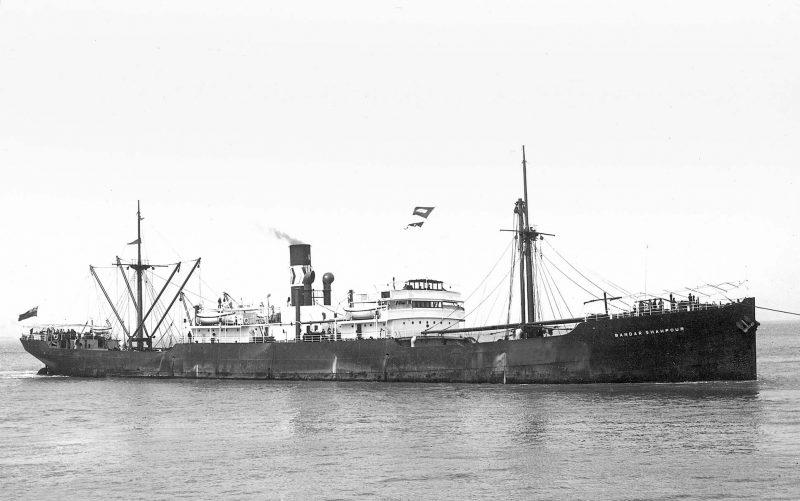
Strick was making great inroads with Midlands cargo through Newport and a freight rate war looked inevitable with the West India Conference. This was avoided by Strick offering in 1905 to load to India from the U.K. West coast at Newport and Cardiff only, and to share his substantial Mormugao charters on a 50-50 basis with Ellerman. Strick gradually became less of a threat to the Bombay Conference by 1914.
Bucknall Lines were taken over by the Ellerman Group in 1908, and the West Hartlepool Steam Navigation Co. Ltd. had withdrawn from the trade by 1909, leaving Strick and Ellerman to draw up an agreement in March, 1909 to share both the outward and homeward Gulf cargoes between them. Frank Strick was becoming important in the Persian Gulf area, together financing with the Burmah Oil Co. Ltd. William Knox d’Arcy between 1901 and 1908 in his quest for oil. During the period 1903 to 1908 Strick ships carried large quantities of equipment, stores and personnel to the Gulf for the D’ Arey exploration team and together with the Strick agents in the area were of great assistance to the drilling teams. This was crowned with success on 26th May 1908 with the first commercial oil find at the Temple of Solomon site in Persia, leading to the setting up of the Anglo-Persian Oil Co. Ltd. in 1909 (later BP). Although the Strick and Ellerman ships were to load alternately for the Gulf, Sir John Ellerman gave Strick full control over the trade to act as loading brokers in London, define loading and discharging ports, fix freight rates etc., as if the service was owned by Strick.
Strick as manager of the trade was charged to be fair as to the cargo carried and ports to be served, and to recognise the equal rights of Ellerman.
The general and piece goods trade from Manchester provided plenty of outward cargo for Gulf, Red Sea ports, Bombay and Karachi; and sometimes returning with dates to the U.S. Gulf and cotton from there to Manchester.
Tabaristan of 1903 sailed from the U.K. in 1905 calling at St. Helena with cattle to feed Boer prisoners of war from South Africa. She then proceeded to Cape Town with Government stores and on to the Gulf with general cargo. At Basrah she loaded dates for New York, moving down to Savannah to load cotton for the Continent. Tabaristan of 1907 from the Henderson yard on the Clyde was given two funnels to emphasise the Strick importance in the Gulf, and was the only Strick ship to have this appearance. She had accomodation for 20 passengers but ran ashore off Kas Madraka in 1909 during the night under the command of Capt. J. B. Moore. This seasoned seafarer quickly put out anchors and refloated her before Arab looters arrived. She was fast but burned 70 tons of coal per day and became uneconomical, being sold to the Admiralty in 1913 as a destroyer depot ship. A dozen new Strick ships had been commissioned between 1905 and 1907 with the older ships being sold off for further service, particularly to the New York & Cuba Mail S.S. Co. Ltd. for Caribbean services.
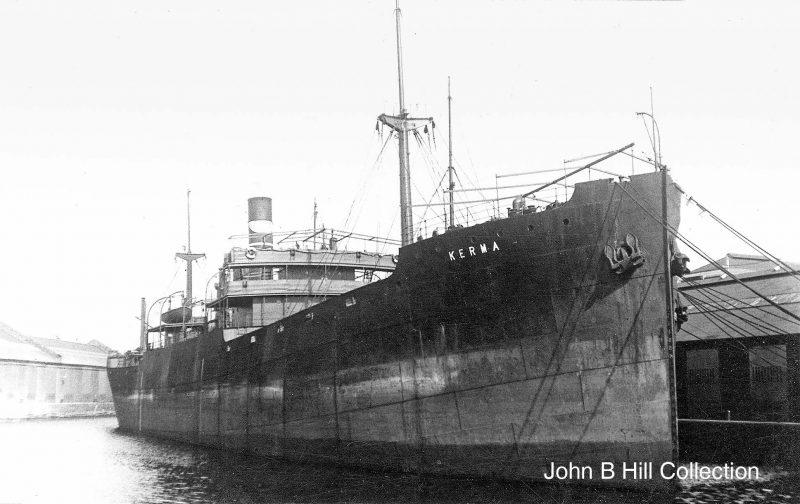
One small ship of very advanced age, Raithwaite Hall, built for the Pyman fleet and subsequently sold in 1906 to France, Fenwick & Co. Ltd., was used as a mobile lighter to transport dates and other cargo from Basrah to complete the loading of Strick ships below the Shatt-el-Arab bar from pre-WWI days until scrapped in 1929. She replaced the earlier Dwina, also a former collier in the North East coal trade, in carrying dates from Basrah to the Shattel-Arab bar. Dwina was sunk in 1909 against the river bank in order to form a jetty to unload the first cargo of pipes for the construction of Abadan oil refinery. Her replacement’s voyage out East was interesting, in that her engines could not be stopped at critical moments, and she rammed and sank the training ship Wellesley moored on the north side of the Tyne as she sailed. Repairs took a month but on arrival at Port Said her engines could not be stopped again but fortunately this time there was more room to manoeuvre! The steam line was finally run down when the pilot station at the entrance to the Shatt-el-Arab hove in sight.
La Tunisienne Steam Navigation Co. Ltd. was set-up in 1909 in association with Societe Commerciale d’Affretements et de Commissiona company set up by Jules Mesnier in Paris in the same year, 1885, as Frank C. Strick began in business. The financial arrangements for building some of the La Tunisienne ships were connected with Mesnier and the Mokta Company, with the cost of at least three ships shared between four companies:-
- Mesnier of Soc. Commerciale d’Affretements
- Mokta Iron Ore Company of Paris
- Naylor, Benzon & Co. Ltd.
- Frank C. Strick & Co. Ltd.
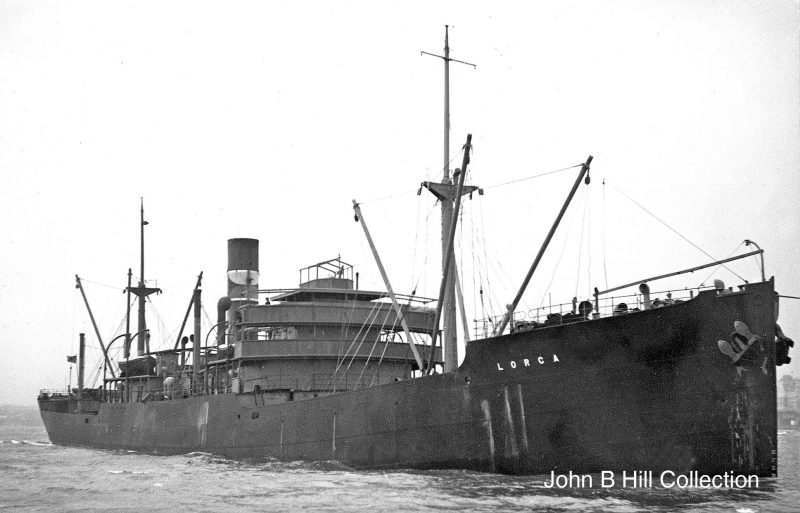
13th August 1955 she was wrecked on Bird Rocks, Magdalen Islands while on a voyage from Sydney, NS to Montreal with coal.
This became the tramping arm of the Strick empire in association with William Cory & Sons Ltd., who provided the outward coal cargoes. At this time Strick also owned bunkering depots at Port Said, Algiers and Oran. Five new tramps were completed at the Gray yard at West Hartlepool between 1910 and 1913 for the new company named Boukadra, Camerata, Djerissa, Mokta and Tabarka. A lucrative trade with hardly any ballast voyages of coal outwards from the Tyne and South Wales ports to Italy, returning with North African iron ore to the Tees was enjoyed.
Two Arabistans were laid down at the Gray yard in 1912 and 1913, the first being sold after completion to British India, and was renamed Chindwara during her maiden voyage later in 1912, and the second completed only one round voyage to the Gulf before being sold to British India on 23rd December 1913 and renamed Chinkoa. A total of three ships were launched as Sharistan at this time but all were completed for British India. In March 1913 a quartet of Hartlepool-built ships with four holds dating from 1911 was sold to the Hamburg-America Line, Armanistan, Gorjistan, Turkistan and Igaristan, with the last named becoming Markomannia and achieving fame a year later as the main collier and supply ship of the German cruiser Emden. The pair sailed from Tsingtao in North China on 6th August, 1914 and swept in an arc across the Pacific to the Marianas before moving to the Indian Ocean through the Timor Strait and causing havoc to British shipping in the Bay of Bengal. Parting company with Emden at Diego Garcia on 30th September Markomannia was scuttled on 12th October off the West coast of Sumatra when she encountered the cruiser Yarmouth.
The Strick Line and La Tunisienne S.N. fleet stood at 14 ships in August, 1914 and was to be very fortunate in the coming war with only four ships lost. The collier Kara of the London & Paris S.S. Co. Ltd., built to carry Tyne coal to Le Havre and Rouen, was also lost:-
- 9.3.1915 Tangistan – Torpedoed and sunk 9 miles N of Flambor-ough Head by U12 o.v. Benisaf to the Tees with iron ore, 38 lost .
- 10.7.1916 Kara – Mined and sunk near Pakefield Gat Buoy in North Sea by UC6 o.v. Rouen to the Tyne in ballast.
- 7.12.1916 Avristan – Torpedoed and sunk 14 miles WSW of Ushant by UC21 o. v. Portland (Me) to London with general cargo.
- 23.10.1917 Seistan – Torpedoed and sunk 3.5 miles from Flamborough Head by UB57 o.v. Tyne to Falmouth with coal, 5 lost.
- 22.11.1917 Kohistan – Torpedoed and sunk 25 miles SW of Marittimo Island, Italy by UC35 o.v. Rangoon to U.K. with general.
The Persian Gulf trade was suspended for the duration of the war due to German and Turkish raids into Persia and the Arabian peninsula from the Middle East. Avristan was torpedoed and sunk while serving on a regular Strick service which had been running for some years between London and Continental ports and the Eastern seaboard of America. Seistan had been requisitioned as a Naval collier, and in addition, the aptly-named managed Huntstrick was torpedoed and sunk 80 miles WNW of Cape Spartel while on passage London to Salonica with Government stores, and 15 crew were lost including the Master. Muristan of 1913 was wrecked one mile off Blyth on Blyth beach on 19th November 1916 while on passage from the Tyne to Rouen with coal.
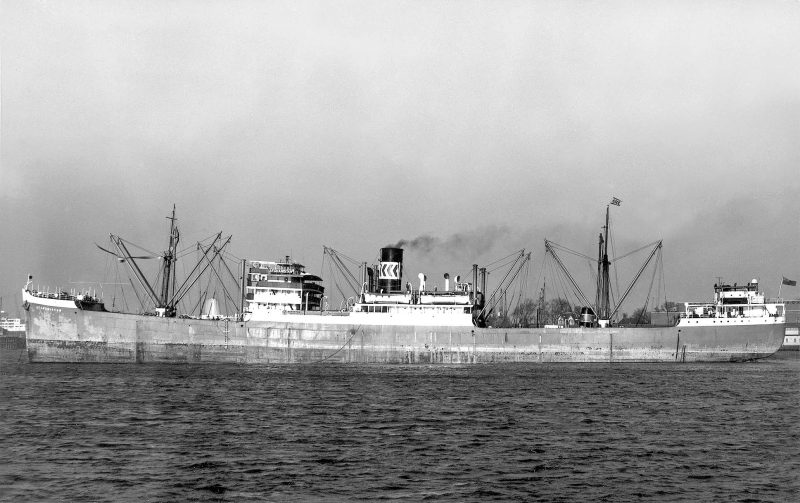
The losses were replaced by the purchase of eight standard WWI types with two WAR ‘A’ class, Arabistan, Turkistan and five WAR ‘C’ class, Muristan, Serbistan, Shahristan, Tunisia, Algorta and one WAR ‘H’ class, Kara. The Strick Line replacements joined new from the shipyard, whereas the La Tunisienne S.N. tramps, Tunisia and Algorta, were not purchased until 1920/21. The new collier Kara was completed at the Gray yard for the London & Paris S.S. Co. Ltd., but she had a brief life as she was wrecked in March 1920. Two French ships, Saint Rene and Saint Roger of 6,900 dwt, were purchased new from the Gray yard in 1922 from Soc. Navale de l’Ouest and renamed Avristan and Registan. They had two distinctive lattice goalpost masts, and were equipped with double bottom tanks to carry oil fuel and fitted with steam heating coils. Their holds were kept free of pillars in order to carry bulky items, which were lifted aboard by one 25-ton derrick and ten of smaller capacity. Two further sisters were completed at the Gray yard for the company in 1923 as Bardistan and Kohistan. All four were sold back to France in 1928, Soc. Nava le de l’Oceanie paying £200,000 in October,1928. Bardistan was subsequently to have a very long career before being broken up at the end of 1976 at Izmir as the Turkish Seferoglu. The German prize Rappenfels of the pre-war Hansa fleet, which had been captured 8 miles S of Ceylon on 8th August 1914 and used throughout and since WWI by the Admiralty, was purchased in 1922 and renamed Nigaristan. The similar Frankenfels, which had been seized at Calcutta in August, 1914 and used by the Admiralty from that date, was later purchased in 1925 and renamed Tabaristan.
The Persian Gulf trade remained under the control of the India Office after the end of the war, and this prompted Frank C. Strick to sell his entire fleet in 1919 at the age of 70 years to Gray, Dawes & Company, the personal company of Lord Inchcape, Chairman of P & O. A management agreement was concluded with Lord Inchcape for Strick Line to continue to manage the ships. In May 1923 P & O acquired the Strick fleet from Gray, Dawes & Company for £573,468, a loan being arranged to cover the cost, and formed Strick Line (1923) Ltd. During 1923 the Persian Gulf trade was re-opened to Strick Line vessels loading at Glasgow and Manchester without interference from the India Office, which had previously only allowed an occasional Strick ship to load when they had no ships of their own.

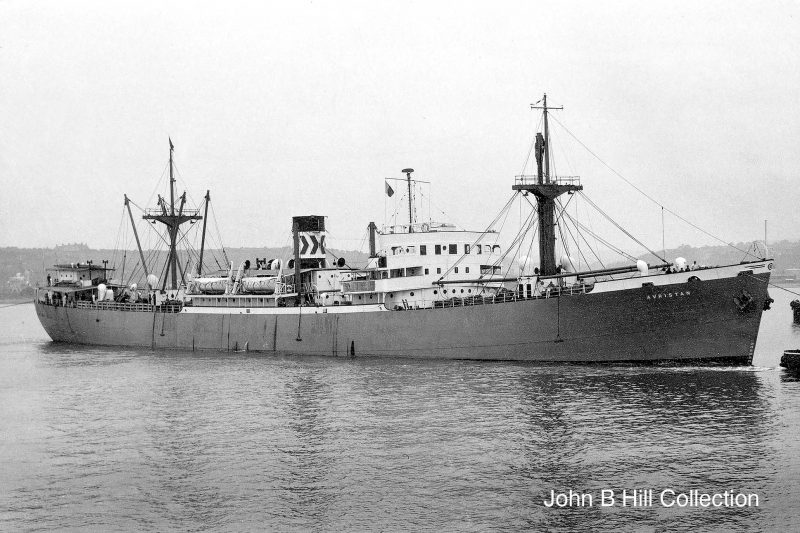
Monique Navigation and renamed Paulia, and in 1966 she joined Victoria Ocean Transport as Victoria Loyal. In 1967 they renamed her Grand Loyal. On 13th February 1970 she arrived at Kaohsiung to be broken up by Hwa Zhong Steel and Iron Works. Photo: John B. Hill collection
Sir John Ellerman naturally then wanted a return to the Strick-Ellerman agreement of 1909, in which they were equal partners with Strick managing the trade. Since Frank C. Strick had now sold out to Lord Inchcape and no longer had any financial interest in the ships, a long period of acrimony followed between Ellerman and himself, and it was 1931 before the Gulf trade was finally apportioned as:-
- Outwards: Strick 75% Ellerman 25%
- Homewards: Strick 71% Ellerman 29%
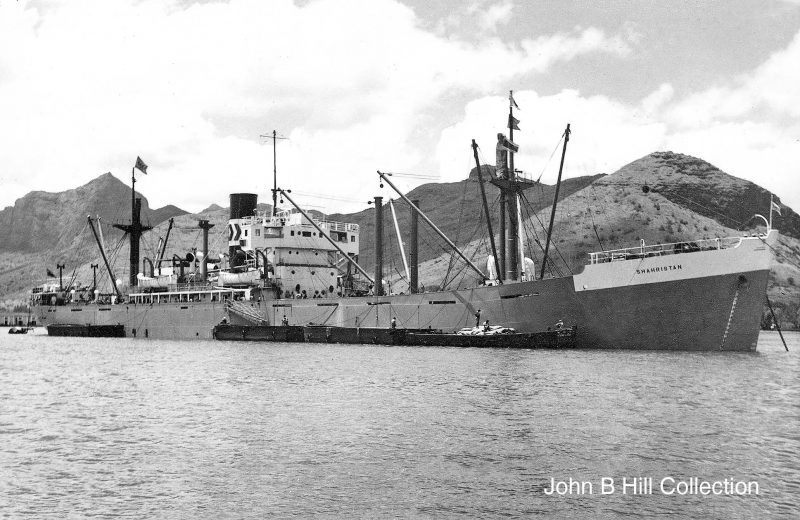
In 1928 Frank C. Strick, at the age of 79 years, repurchased a 49% stake in his fleet from Lord Inchcape and P & O for £236,228. He had set up a new company, the London, Paris & Marseilles S.S. Co. Ltd. in February, 1920 with a capital of £1 million but only half of this was issued, and the 49% minority interests were restored through this company in:-
- Strick Line (1923) Ltd.
- Shahristan S.S. Co. Ltd.
- Turkistan S.S. Co. Ltd.
- Serbistan S.S. Co. Ltd.
The last two companies were then liquidated. P & O ultimately acquired the Strick minorities in the first two companies in 1972.
A new ship was purchased from the John Readhead shipyard in South Shields while building as a ‘spec’ ship. However she was sold on the stocks to Turnbull, Scott & Co. Ltd. and completed as Southgate in November 1926. This was the first contact in a long association between Stricks and Readheads resulting in 44 ships being completed for the fleet by Readhead.
A profit of £10,000 was made by Frank Strick on this ship as her contract price was £65,000 and the price paid by Turnbull, Scott was £75,000 much to the chagrin of Sir James Readhead.
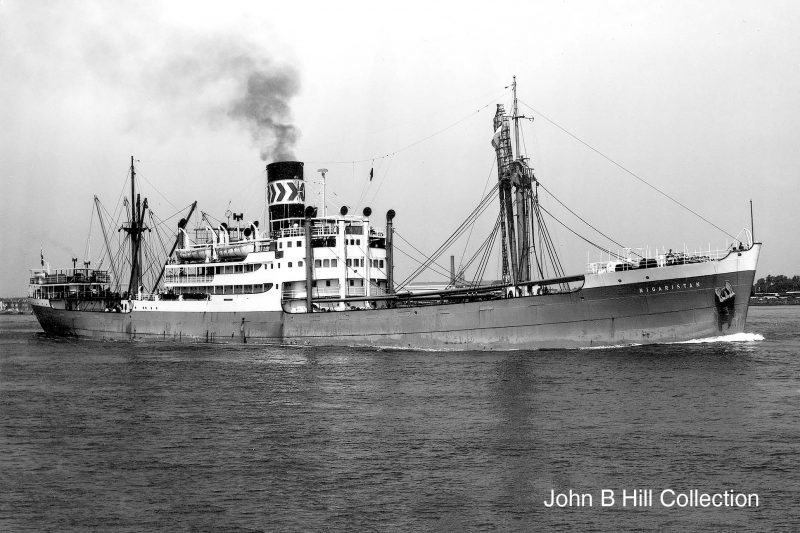
A new Arabistan was delivered by Gray in 1927 and renamed Bandar Shahpour after the Persian port in 1929. The Strick fleet as majority owned by P & O, of course, during their long building association with the Readhead yard with some 16 Readhead-built tramps and cargo-liners completed between 1927 and 1931:-
Persian Gulf traders: Baharistan, Floristan, Arabistan, Gorjistan, Kohistan, Registan.
Mediterranean tramps: Tunisia, Guelma, Marsa, Batna, Thala, Brika, Hamla, Tafna, Camerata, Lorca.
With Tunisia delivered first in June 1927 and sailing on her maiden voyage under Capt. Knight. However orders had been placed with the German yard of Seebeck A.G. at Geestemunde for the first two tramps to be completed after the war for the La Tunisienne S.N. Co. Ltd. in 1923, Zembra and Mora. They were unusual in being cantilever framed with top-side tanks, and had longitudinal strengthening with longitudinal framing at double bottom and deck level. Mora had a brief career being wrecked on 8th February 1924 near Cape St. Vincent while on a voyage from Manchester to Savona with a cargo of coal. Zembra was sold back to Germany in 1937 on purchase by steel company Krupp for iron ore shipments. A single tramp had also each been completed by the Gray and Henderson yards, Medjerda of 1924 and Kerma of 1928 respectively, with the smaller Goleta coming from the Burntisland yard in 1927. There were now three owning companies for the tramps, La Tunisienne S.N. Co. Ltd., Le Mesnier S.S. Co. Ltd., and Cory & Strick.
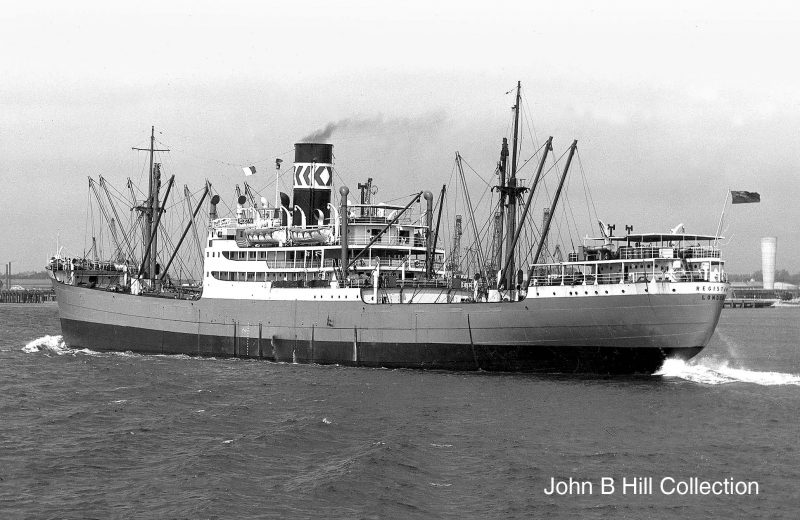
The Gulf traders remained in service throughout the Depression with three Strick Line ships loading for every one Ellerman ship on the joint service. Predictably, however, four of the Mediterranean tramps were laid-up for a long spell at Fowey and were still there in September 1933. They were Hamla, Medjerda, Tafna and Thala. An improvement in trade brought orders for the Readhead yard, which had also lain idle for five years apart from one Bank Line ship, in January 1936 from Strick Line. The sisters Armanistan and Baltistan were completed in 1937/38 equipped with a L.P. exhaust turbine to boost the triple expansion engines. Another similar pair followed in 1938/39, Shahristan and Turkistan, and another pair in 1940, Afghanistan and Baluchistan. The fleet at the outbreak of WWII consisted of thirteen Gulf traders and twelve Mediterranean tramps, and the losses were to be heavy and extensive:-
- 24.10.1939 Tafna – Torpedoed and sunk off Algarve coast o.v. Benisaf to London with iron ore, 2 lost.
- 3.2.1940 Armanistan – Torpedoed and sunk off Portuguese coast o.v. Antwerp to Basra with general cargo, sugar & iron rails.
- 27.2.1941 Baltistan – Torpedoed and sunk off W. Ireland o.v. Ellesmere Port to Table Bay with military stores, 51 lost.
- 17.3.1941 Medjerda – Torpedoed and sunk by U105 near Cape Verde Is. o.v. Pepel & Freetown to U.K. with iron ore in convoy SL68.
- 29.5.1941 Tabaristan – Torpedoed and sunk to SW of Freetown o.v. Basrah & Table Bay to Freetown & U.K. with groundnuts, pig iron & manganese ore, 21 lost.
- 17.7.1941 Guelma – Torpedoed and sunk to S of Madeira o.v. Madeira to Pepel in ballast.
- 29.7.1941 Shahristan – Torpedoed and sunk near Azores o.v. London & Clyde to Basra with military stores, 39 crew & 26 passengers lost.
- 4.8.1941 Tunisia – Bombed and sunk off W. Ireland o.v. Pepel to Workington with iron ore, 38 lost.
- 8.3.1942 Baluchistan – Torpedoed and sunk near Freetown o.v. Basra & Table Bay to Freetown & U.K. with dates & general, 3 lost.
- 13.5.1942 Batna – Torpedoed and sunk in N. Atlantic o.v. Newport & Milford Haven to Halifax with coal, 1 lost.
- 18.8.1942 Arabistan – Shelled and sunk by raider Michel in S. Atlantic o.v. Basra & Table Bay to Trinidad & New York with general.
- 23.8.1942 Hamla – Torpedoed and sunk by U506 in S. Atlantic o.v. Rio de Janeiro to Freetown & U.K. with manganese ore, all lost.
- 28.9.1942 Registan – Torpedoed and sunk to SE of Barbados o.v. Basra & Table Bay to Trinidad & Philadelphia with general, 16 lost.
- 30.4.1943 Bandar Shahpour – Torpedoed and sunk near Freetown o.v. Abadan, Mormugao & Takoradi to Freetown & U.K. with oil seed, manganese ore, rubber & copra, 1 lost.
- 8.5.1943 Camerata – Sunk at Gibraltar by Italian assault craft.
- 21.11.1943 Marsa – Bombed and sunk in Bay of Biscay o.v. Oran & Gibraltar to Ardrossan with iron ore, 1 lost.
Baltistan was machine-gunned by aircraft to the W. of County Donegal on 29th August 1940, and then sunk by the Italian submarine Bianchi five months later on 27th February1941 near the same position while on a voyage from Ellesmere Port to Table Bay with 6,200 tons of military stores. The death toll was heavy with 47 of her 61 crew killed as well as 4 of her 8 passengers. Baluchistan was bombed by aircraft in the Eastern Mediterranean at the end of March 1941 during the German take-over of Greece and Crete. She was repaired but sunk in the Freetown area a year later by U68, which also sank six other British merchant ships during March 1942. Arabistan under Capt. Barret with a crew of 57 and 10 passengers was shelled and sunk on 18th August 1942 by the raider Michel E. of Pernambuco on her instructed course from Basrah and Table Bay to Trinidad and New York. She was carrying 3,267 tons of general cargo including tobacco, fur skins, liquorice and steel. On the same day, Hamla under Capt. Shute left Rio de Janeiro homeward bound for Freetown with manganese ore carrying a crew of 38 and 4 gunners. Independently routed she was never seen again and was torpedoed and sunk at dusk on 23rd August by U506 over 500 miles to the North of where Arabistan had been sunk five days earlier. It was thought for a long time afterwards that Hamla had also been sunk by Michel.
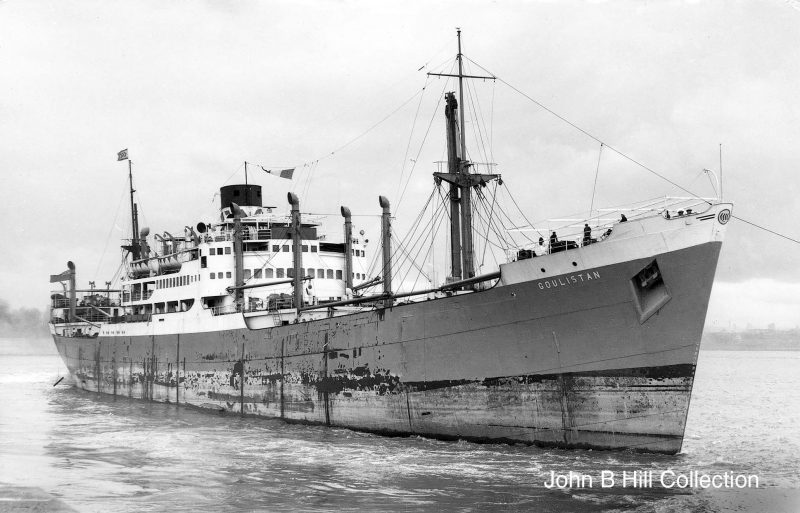
Frank C. Strick died during January 1943 in his 94th year, having remained a bachelor all his life. Apart from a London house, his love of the countryside had led to owning a home in North Devon and later in the Thames Valley at Townsend Farm, Streatley-on-Thames near Reading, where he died. He had retired in 1939 and was succeeded as Chairman and Managing Director by Frederick J. Hallet, who remained as such until the 1960s.

Nine ships had been managed for the Ministry of War Transport, and the drastically reduced fleet in 1945 consisted of four pre-war Gulf traders and two Mediterranean tramps, along with six war-built replacements, five motorships from the Doxford yard and the new steamer Shahristan from Readheads in 1945. The tramp Lorca had been sold to Court Line in 1943 and then to Michalinos Brothers in 1944 and renamed Loradore in 1946, and the survivors Brika and Kerma were then joined in 1947/48 by two even older tramps, the former Common Brothers Badjestan of 1928 was purchased in 1947 and renamed Camerata, plus one from the Court Line fleet, Barrington Court of 1924, renamed Leon de Nervo. These four continued in the coal outwards, iron ore homewards Mediterranean trade until Strick withdrew with the demise of the coal trade and they were all sold off by 1952. The main Persian Gulf trade was to be built up from 1947 by P & O with 24 new cargo-liners including eight steamers, of which all but two were to be built at the John Readhead yard in South Shields:-
Readhead (22) Registan, Nigaristan, Tabaristan, Armanistan, Goulistan, Muristan, Tangistan, Baltistan, Khuzistan, Baluchistan, Seistan, Karaghistan, Farsistan, Kohistan, Gorjistan, Turkistan, Shahristan, Floristan, Registan, Serbistan, Tabaristan, Nigaristan.
Caledon (1) Baharistan
Short (1) Albistan
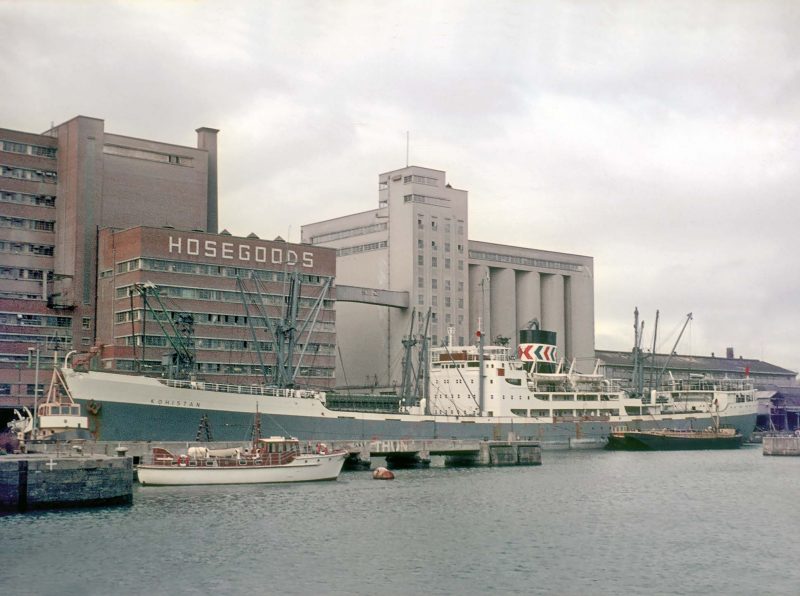
The first seven shown in the Readhead list and the Short-built Albistan were steamers, all completed between 1947 and 1950. These impressive cargo-liners had steam funnels, later raised in height, and five holds served by a total of sixteen derricks of which two had a heavy lift capacity, with the tops of the kingposts open to serve in a dual capacity as hold ventilation. Accommodation was provided for twelve first-class passengers in single cabins. The first motorship was Baltistan of 1953, supplied with a 4-cylinder Doxford oil engine by N.E. Marine Engineering Co. Ltd., Wallsend. They usually had six holds, a long fo’c’stle and poop and raised superstructure three decks high, with 16 derricks on two masts and two sets of kingposts immediately forward and aft of the superstructure. The versions built in the 1960s had composite bridge structures, and their oil engines were then built on the Wear starting with Gorjistan of 1961. Tabaristan was launched on 17th January 1969 and was delivered seven weeks ahead of schedule on 7th May 1969 at a cost of £2 million. She was fitted with a large Stulcken heavy-lift derrick amidships and four deck cranes whereas her sister Nigaristan, the final Strick cargo-liner, had a total of eight cranes with two replacing the Stulcken. Their 6-cylinder Doxford oil engines gave over 18 knots on trials to satisfy a 17.5 knot service speed requirement. Deck cranes were introduced with Shahristan and Floristan of 1965, which were also fitted with a Stu lcken heavy- lift derrick.
The unfortunate Seistan of July 1957 was to have the shortest career of the post-WWII Stricks, meeting a tragic end on her second voyage on 17th February 1958. A fire erupted in no.5 hold where gelignite and detonators were being carried while she was in the Persian Gulf on an outward voyage from Liverpool to Khorramshahr. She put into Bahrein with her stern and aft superstructure damaged and unloading into barges commenced. However the fire started up again followed by a massive explosion killing 58 people including 4 in a tug alongside. Seistan was almost split in two with her stern completely wrecked. The forepart was eventually salved and arrived at Palermo in tow for scrapping on 11th April 1959. This disaster also meant a stay of execution for the four pre-WWII survivors that were still trading, Kohistan, Gorjistan and Baharistan (renamed Selvistan in 1957 to free the name for a new ship). They made a few more voyages until a new replacement for Seistan was ready and the old-timers were scrapped in Japan at the end of 1959 and through 1960. The other survivor, Turkistan of 1939, was sold for further service in 1962 but was lost shortly afterwards on 22nd July 1962 in a typhoon off Formosa.
The Tyne-built Anchor Line cargo-liner Elysia was purchased in 1968, having been completed in March 1965 for the Indian liner service of her owners. She was renamed Armanistan and switched to the nearby Persian Gulf trades. Although a subsidiary of P & O since 1923 the Strick cargo-liners were transferred to the General Cargo Division of P & O during 1972 and 1973, and sadly lost their famous red and blue Strick chevrons in favour of the more utilitarian P & O turquoise blue funnel. They were given ‘A’ prefixes to new ‘Strath’ names e.g. Strathairlie during February and March 1975 but had all been sold for scrapping or further service by 1979. It was Serbistan of 1966 that was to survive longest under foreign flags until her arrival on 19th March 1988 at Kaohsiung for breaking up.

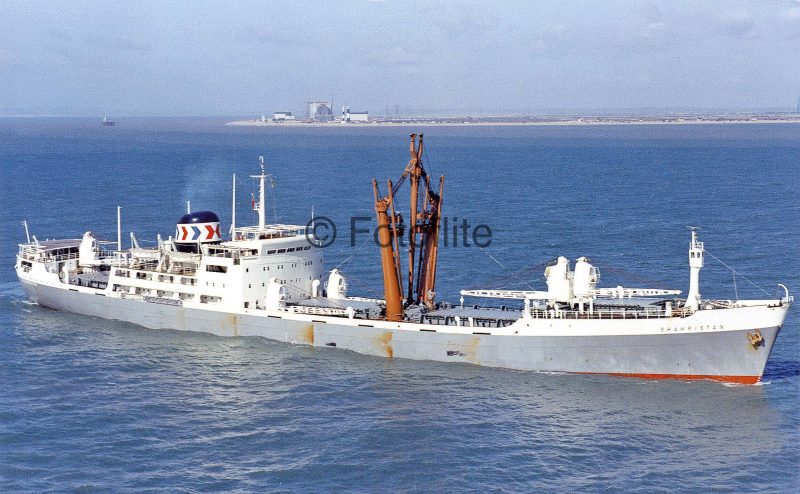
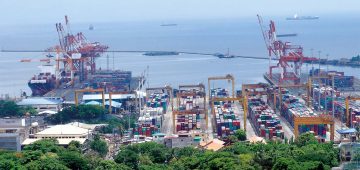



Comments
Sorry, comments are closed for this item